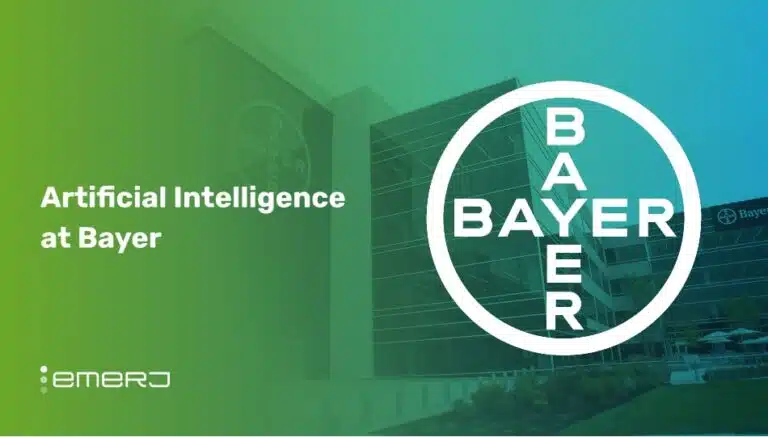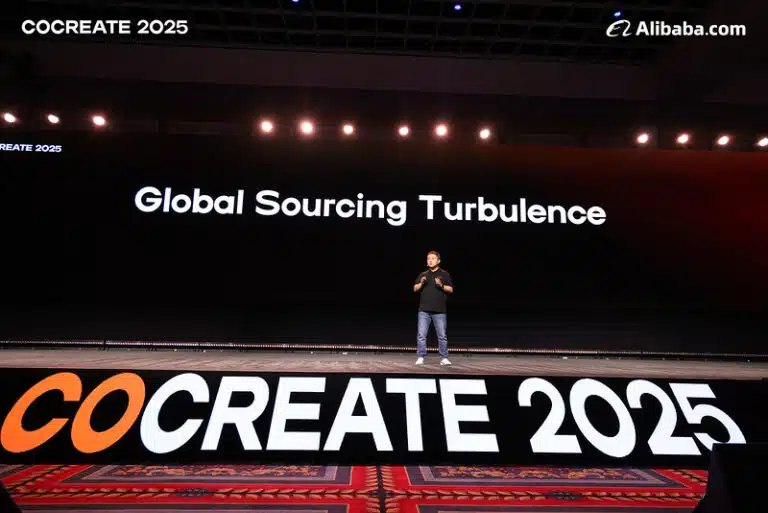This interview analysis is sponsored by InstaDeep and was written, edited, and published in alignment with our Emerj sponsored content guidelines. Learn more about our thought leadership and content creation services on our Emerj Media Services page.
Printed circuit boards (PCBs) are the foundation of virtually every electronic device, from smartphones to spacecraft. Despite decades of progress in layout tools, PCB design remains one of the most manual and time-consuming stages of hardware development — even for experienced engineering teams.
As devices become more advanced, PCBs must support an increasing number of layers, diverse signal types, and a growing set of design constraints. According to a NASA high-speed PCB design guide, modern boards frequently operate at multi-gigahertz speeds and include high-density components and microvias, dramatically increasing layout complexity. That complexity turns PCB layout into a multi-variable optimization challenge, where even small changes can ripple across thermal, signal, and manufacturing domains.
Traditional tools often fall short, relying on rigid rule sets that struggle to balance thermal, electrical, and manufacturing constraints at scale. Research from MIT’s Center for Bits and Atoms, a leading authority in computational fabrication, highlights how AI-driven approaches can improve efficiency by addressing these limitations.
As a result, even skilled teams spend significant time on repetitive layout work instead of innovation. Research from Cornell University found that the placement phase alone can consume up to 50% of total PCB design time, making it a dominant bottleneck in the layout workflow.
A recent presentation at the ACM/IEEE Design Automation Conference underscores how layout tasks remain largely manual and rule-based across the industry, with automation still in early stages of adoption despite its clear potential to reduce turnaround times and alleviate engineering overhead.
To help solve these challenges, a study from the University of Illinois introduced the μPCBComplexity metric to quantify PCB design effort, citing rising component density, thermal constraints, signal integrity, and mixed-signal integration as key factors contributing to increased layout complexity and cost. New metrics are helpful, but only when paired with powerful new technology to maximize their effectiveness.
On a recent episode of the AI in Business podcast, Emerj Editorial Director Matthew DeMello spoke with Alain-Sam Cohen, Head of Product at InstaDeep, about how reinforcement learning is being applied to the most sequential and time-intensive stages of PCB layout — specifically placement and routing. In the episode, Cohen shares how one organization was able to compress a process that once spanned a month into just a couple of days using AI-assisted workflows — offering a glimpse into what scalable, high-efficiency design could look like across the sector.
This article breaks down three significant insights from their discussion:
- Driving sequential decision-making for modeling PCB layout with Reinforcement Learning: Treating PCB design as a step-by-step process allows reinforcement learning models to optimize placement and routing decisions dynamically rather than relying on static rules.
- Automating repetitive tasks while preserving engineering control: AI handles routine layout work, allowing engineers to define constraints and make final decisions — accelerating output without losing oversight.
- Embedding AI into existing workflows for faster iteration and ROI: Integration with standard design tools enables teams to adopt AI-driven optimization without disrupting familiar systems, allowing for faster prototyping and measurable time savings.
Listen to the full episode below:
Guest: Alain-Sam Cohen, Head of Product, InstaDeep
Expertise: AI Product Development, Reinforcement Learning, Hardware Optimization
Brief Recognition: Alain-Sam leads the development of AI-native design systems at InstaDeep. His work focuses on applying deep reinforcement learning to complex engineering workflows, including chip and PCB design.
Modeling PCB Layout as a Sequential Decision Problem
Alain-Sam begins his podcast appearance by explaining that traditional PCB layout tools rely on rules-based automation—an approach that struggles to account for the complexity and interdependency of real-world designs. Each design decision can impact power integrity, manufacturability, and downstream performance, whether it involves the placement of a capacitor or the routing of a trace.
The problem for manufacturers, Alain-Sam points out, is seeing the challenge as a sequence of steps:
He tells the Emerj podcast audience that engineering teams at InstaDeep apply reinforcement learning (RL) to PCB challenges by treating layout like a step-by-step optimization task. The AI agent learns to place components and route traces through trial and error, improving its results with each iteration.
Alain-Sam also notes that, unlike heuristics, which follow human-created shortcuts, RL models learn directly from millions of layout attempts. Over time, the system develops a nuanced understanding of design trade-offs, such as balancing thermal dissipation, signal integrity, and cost, without requiring human intervention.
He emphasizes that the advantage isn’t just speed; it’s adaptability. As the AI sees more examples, it generalizes more effectively to new board layouts, design constraints, and form factors — creating long-term value that scales across the entire enterprise.
Automating Repetitive Tasks While Preserving Engineering Control
Later in the podcast, Cohen emphasizes that the goal of AI deployments for PCB design workflows isn’t to replace engineers but to free them from layout tasks that add little creative or strategic value:
“A board that would have taken two engineers four weeks to lay out — so about 160 man-hours — was done 90% by the AI within a day,” he tells Emerj Editorial Director Matthew DeMello. “The engineers reviewed it, made refinements, and finished the process in under three days.”
He describes new, modern layout automation systems that allow engineers to mark specific components as fixed or to block off sections of the board. This human-in-the-loop model ensures that critical design decisions remain in the hands of engineers. At the same time, the AI handles tasks such as spacing, trace routing, and other repeatable patterns.
Alain-Sam notes that these workflows are especially useful for teams working on high-volume board types with similar constraints. Engineers can set up guardrails, allow the AI to iterate autonomously, and then intervene selectively — resulting in faster throughput and fewer errors during final review.
Alain-Sam Cohen explained that engineers interact with AI systems in flexible ways depending on project needs and personal preferences. Some monitors AI progress in real-time, while others let it run overnight before reviewing. Hybrid workflows are common — engineers may handle critical sections manually and delegate the majority (80–85%) of layout work to AI. Teams often block sensitive areas from AI placement and then intervene after the AI has completed routine tasks. This balance preserves engineering control while accelerating throughput and maintaining quality.
In his view from working with data leaders at InstaDeep, the impact of automating PCB design workflows with AI includes:
- Improved design speed: A medium-sized board that previously took two engineers four weeks to complete was 80–90% finished using a deep reinforcement learning-based AI system in just 24 hours, with final review and adjustments completed the next day, reducing the total turnaround time from 20 days to 2–3 days.
- Reduced reliance on a small pool of expert engineers: The AI system automates the repetitive 80–90% of placement and routing tasks, allowing engineers to focus on the 10–20% of the design that requires specialized creativity and domain expertise.
- Ability to run multiple design jobs in parallel: Unlike human designers, the AI can handle multiple board designs simultaneously, enabling teams to batch tasks and significantly increase throughput without additional headcount.
- Increased bandwidth without sacrificing quality: Engineers retain oversight of key design decisions and can review or fine-tune the AI-generated layouts, maintaining quality while expanding capacity.
Embedding AI into Existing Workflows for Faster Iteration and ROI
Alain-Sam Cohen highlights that integrating AI layout tools via web-based platforms and APIs lets engineers work entirely within their familiar PCB design software. This seamless integration means teams don’t have to switch between different applications, reducing friction and enabling faster iteration cycles.
“Currently, you can visualize your board, upload your problem, download the results, then return to your tool,” he explains. “Now, with API access, AI-assisted layout features can appear right inside your existing software — as an extension, a button, or a connection. So engineers keep working in their tool of preference without interruption.”
According to Cohen, this smooth integration of AI enables engineers to iterate more quickly and manage higher design throughput. “You can run five boards in parallel, and the AI manages all the low-value work,” he notes. “This expansion of capacity improves productivity and helps teams deliver faster results to market.”
He adds that some companies have compressed PCB layout cycles from around four weeks to just two days by applying reinforcement learning to the most time-intensive parts of the process. The resulting time savings enable engineers to focus more deeply on creative and high-value design tasks rather than repetitive tasks.
Cohen also emphasizes that data security and intellectual property protection are essential for enterprise adoption. He notes that flexible deployment options — including on-premises installations and cloud-based platforms with industry-standard certifications — are often used to address these concerns. Additionally, he states that proprietary training data remains siloed and is not used to improve performance across clients.
By embedding AI directly into existing workflows, Cohen suggests that organizations can enhance engineering efficiency, more effectively allocate resources, and expedite delivery timelines — all while maintaining control over sensitive intellectual property.



















